- HOME
- Top Page
- Our Businesses
- Structural Analysis / Dynamic Analysis
Structural Analysis / Dynamic Analysis

First we solve the amount of deformation and stress distribution of complicated shapes, which are difficult to calculate by hand, and then we use simulation to confirm whether it is within the material strength and whether the design criteria are satisfied.
It is possible to understand the natural frequency (natural period) of complicated shapes, and to check the vibration mode.
We can view excitation at a constant frequency and understand the response of each component to the actual vibration input.
Statistical processing is used to calculate behavior that is associated with irregular excitation or unknown excitation as a response value.
Analysis Targets

Types of Analysis
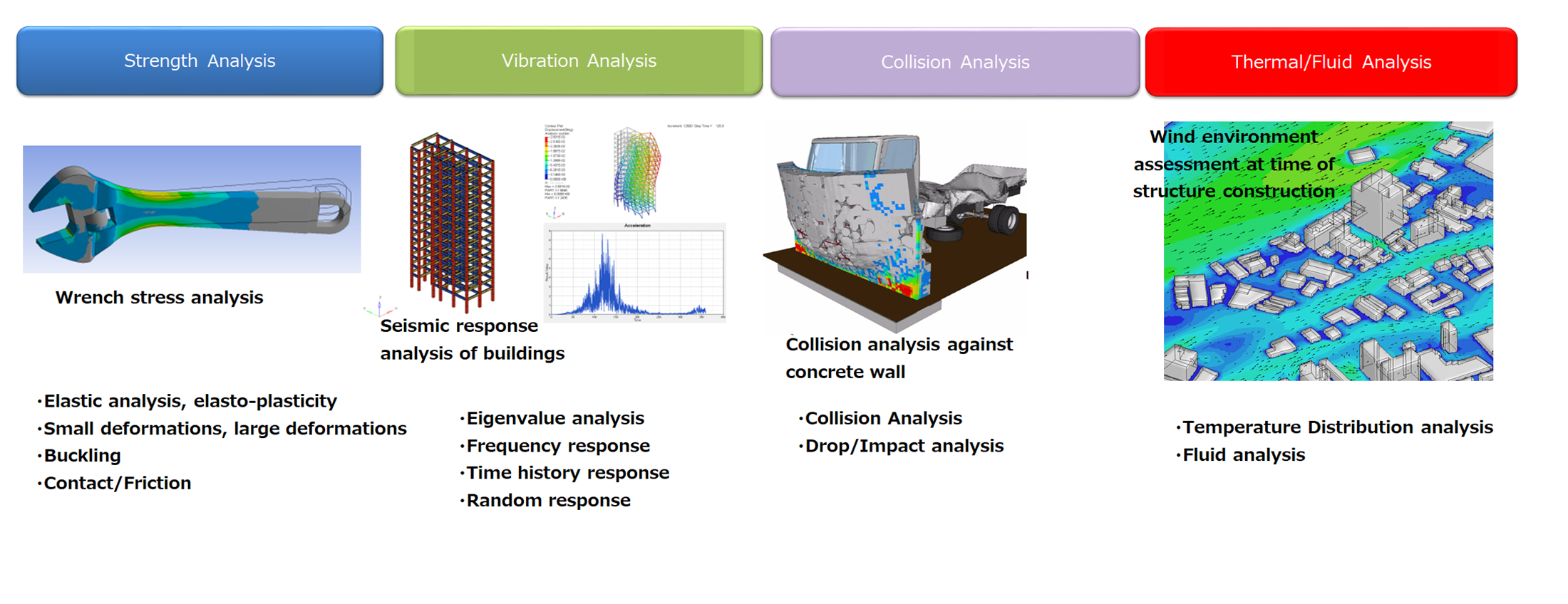
Software Used
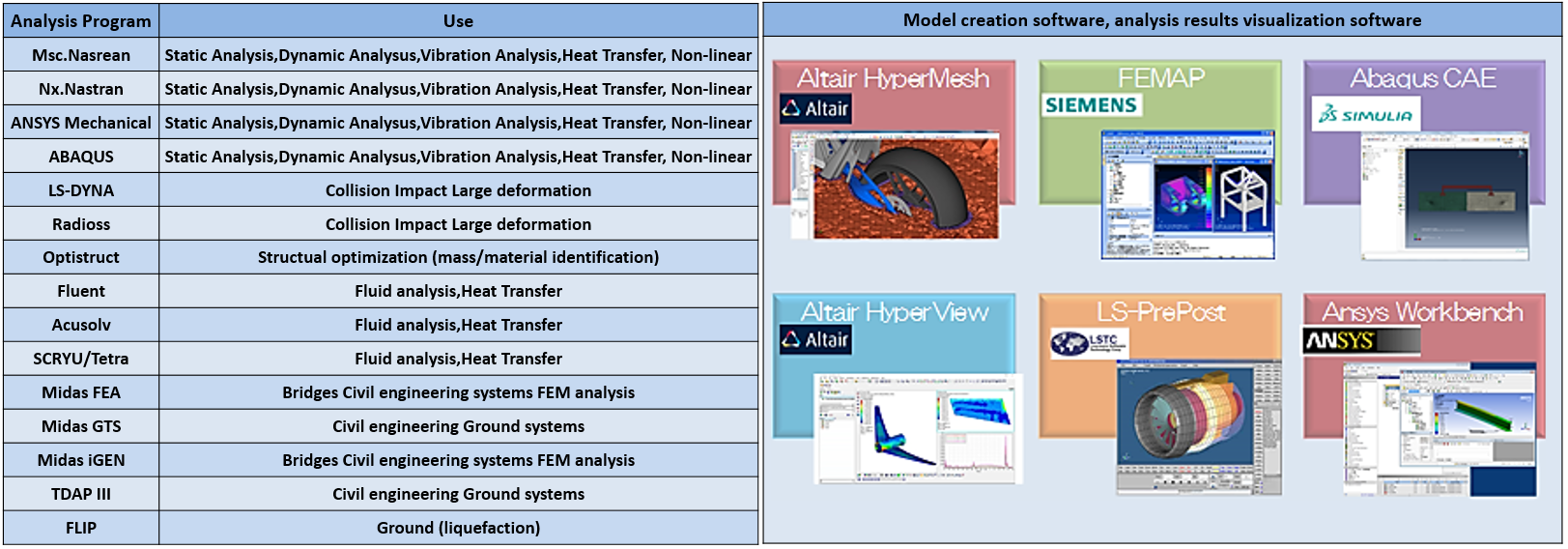
Fatigue Evaluation of Pipe Joints
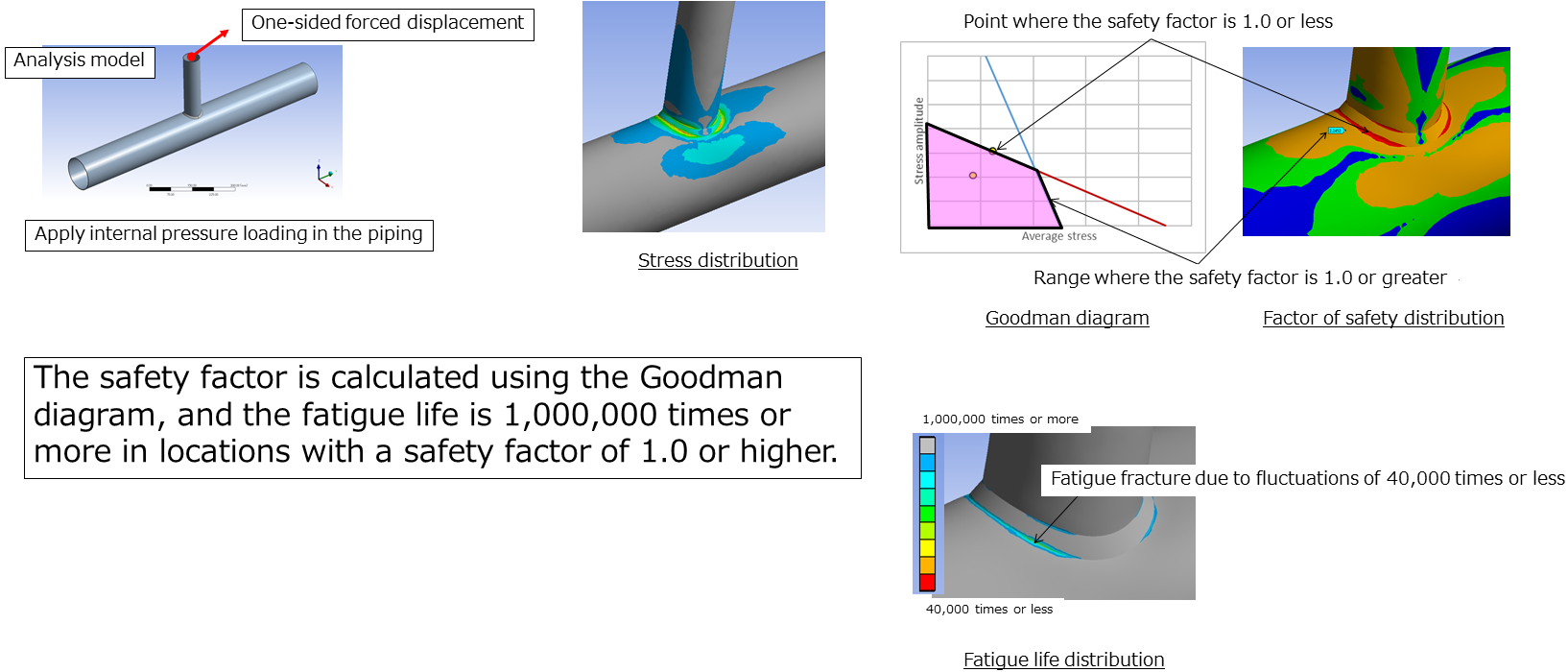
Fatigue fractures occur when cracks develop gradually due to repeated load, even if the load is less than the static fracture strength of the material.
For products that are subject to repeated loads, it is important to predict their fatigue life in order not to cause fatigue fracture.
Here, the stress concentration at the pipe joint due to repeated load on the pipe is confirmed to predict the fatigue life.
Aseismic Evaluation of Nuclear Equipment

We evaluate both aseismicity and strength using standards such as JEAG and JEAC.
For an analysis on construction plan approval, we prepare the necessary evidence materials.
We conduct stress calculation using the material mechanics by combining load conditions such as seismic, snow, wind, and tornado loads. When considering dynamic seismic loads, we perform spectral response analysis using the floor response spectrum.
Aseismic Evaluation of Underground Structures
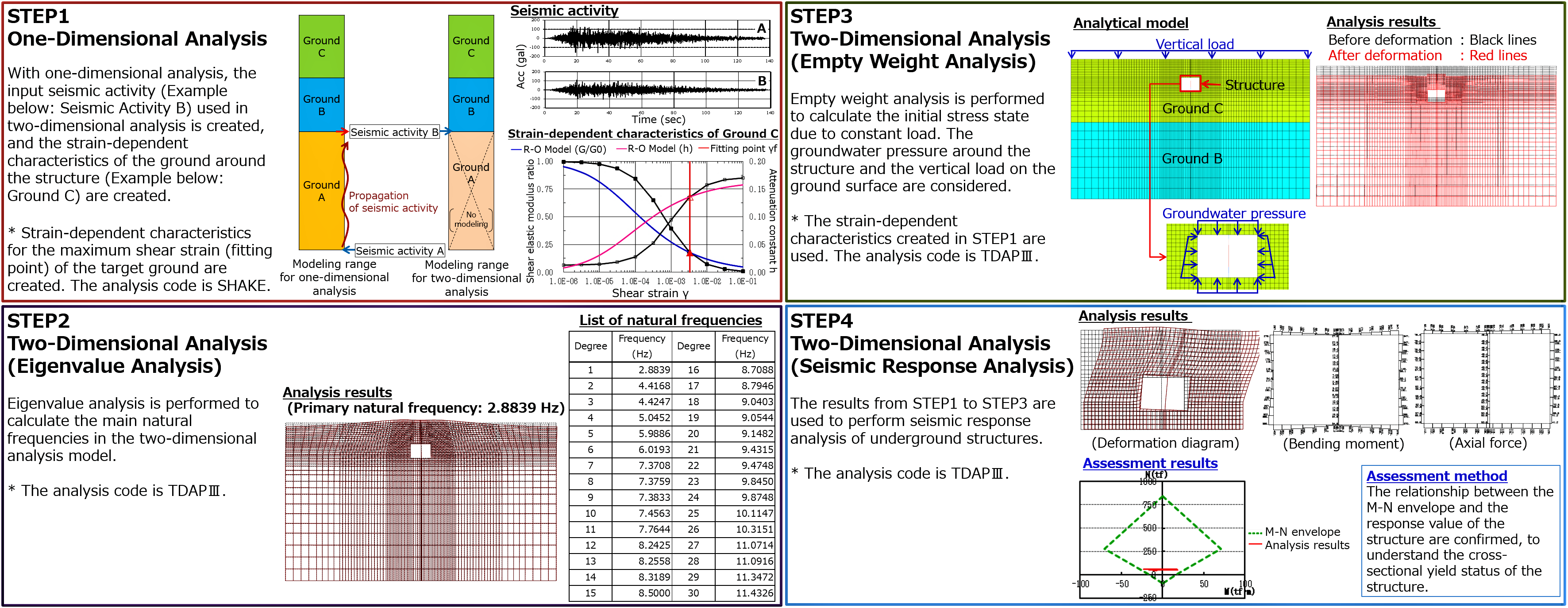
Since underground structures are affected by the surrounding ground, it is important to consider the characteristics of the ground when evaluating underground structures.
By simulating the ground and underground structures, we can predict deformations in the ground and understand the forces acting on underground structures.
This section shows the seismic safety evaluation of underground structures at a nuclear-related facility.
When an aseismic evaluation of underground structures at nuclear-related facilities is conducted, the evaluation is made in accordance with the "Guidelines for Performance Evaluation of Earthquake-Resistant Guidelines for Seismic Performance Verification of Important Outdoor Civil Engineering Structures at Nuclear Power Plants , June 2005.”
Ground Liquefaction Analysis
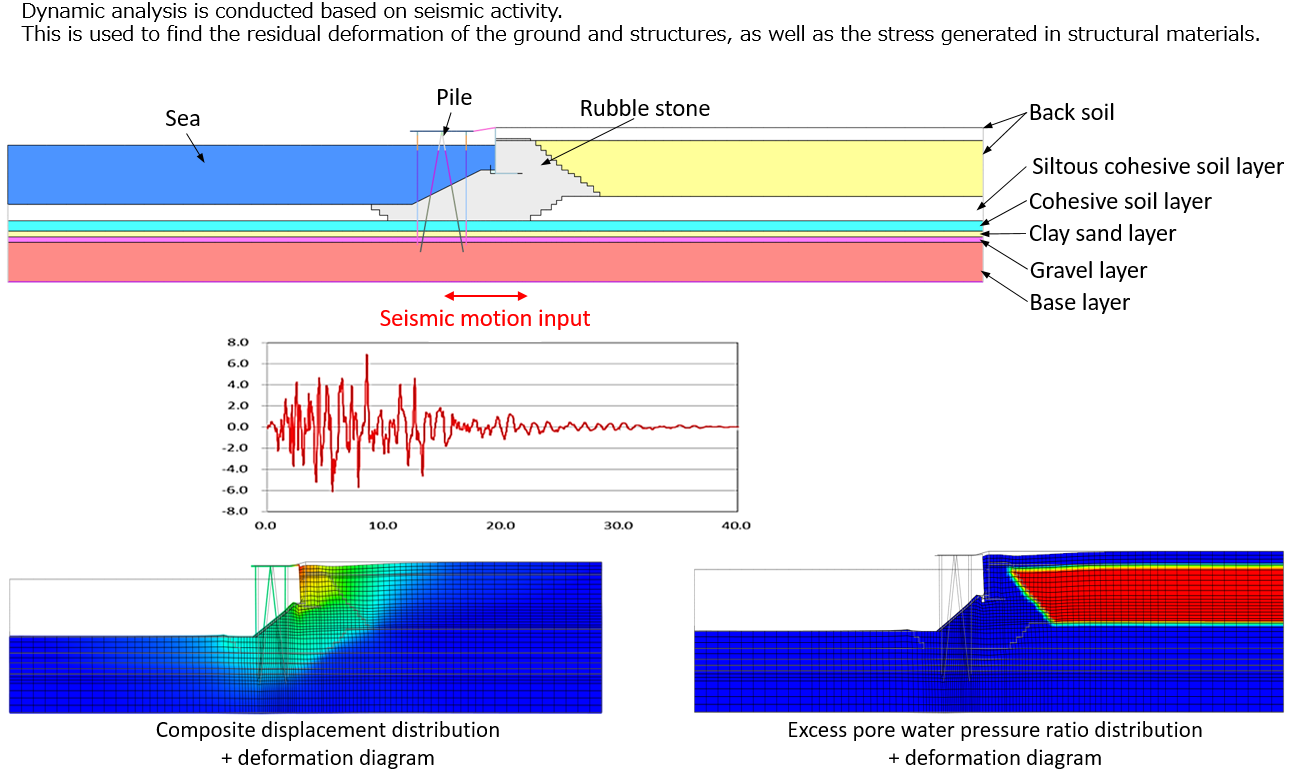
Liquefaction is a phenomenon in which sandy ground containing groundwater behaves like a liquid due to vibration.
Liquefaction analysis is required in order to understand the effects of ground liquefaction in advance.
We use the “FLIP” structural damage prediction program to analyze ground liquefaction due to earthquakes. It is possible to find the residual deformation of the ground and structures due to seismic activity, as well as the stress generated in structural members.
